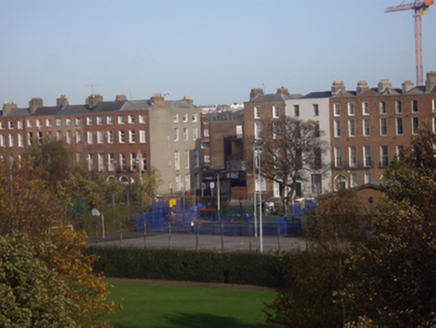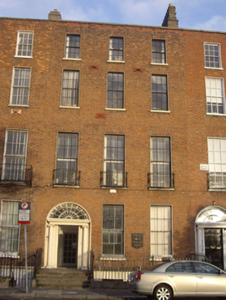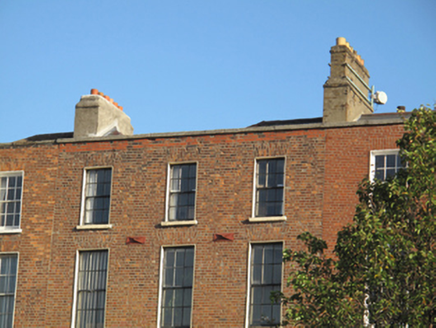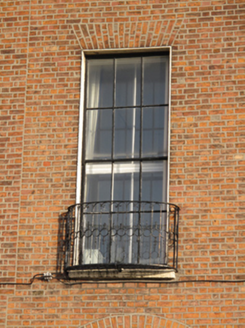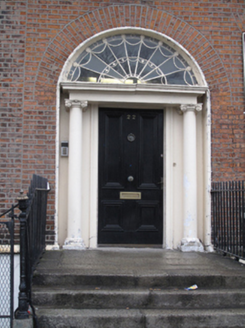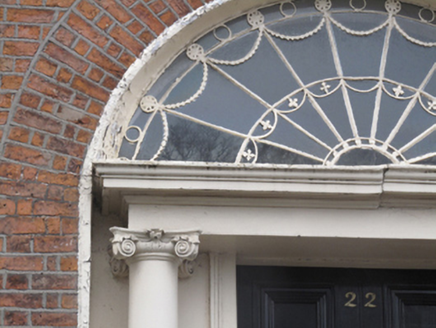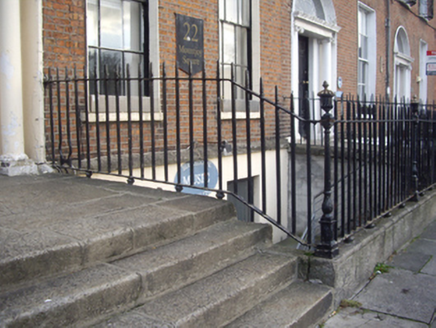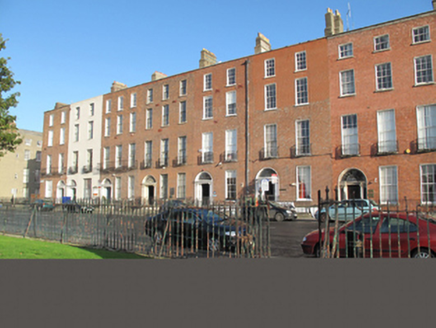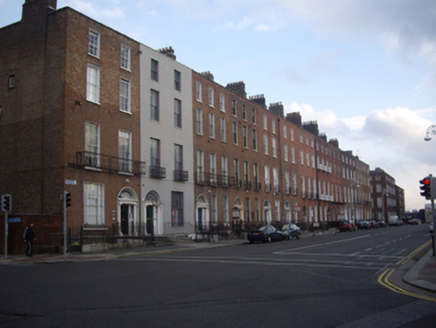Survey Data
Reg No
50011048
Rating
Regional
Categories of Special Interest
Architectural, Artistic
Original Use
House
In Use As
Office
Date
1810 - 1820
Coordinates
316133, 235508
Date Recorded
16/11/2011
Date Updated
--/--/--
Description
Terraced three-bay four-storey house over exposed basement, built, c.1815, as one of six houses. Now in commercial office use. Double-pile hipped slate roof with cruciform lead valley. Roof hidden behind rebuilt parapet wall with granite coping and stepped rendered brick chimneystacks with clay pots to both party walls. Red brick walls laid in Flemish bond with iron tie-plates. Chamfered granite plinth course above painted rendered basement walls. Cement rendered walls to rear elevation. Gauged brick flat-arched window openings with patent rendered reveals, painted granite sills and six-over-six pane timber sliding sash windows with convex horns, and with recent single-pane replacement windows to basement. Decorative bowed wrought-iron balconettes to first floor. Gauged brick round-headed door opening with rendered surround and painted stone Ionic doorcase. Replacement flat-panelled timber door flanked by plain rendered jambs and Ionic columns on plinth bases supporting lintel cornice and original cobweb leaded fanlight. Door opens onto granite platform and four granite steps bridging basement. Platform and basement enclosed by original wrought-iron railings with integrated bootscraper to platform railing and cast-iron corner posts set on moulded granite plinth wall to street. Matching iron gate provides basement access via steel steps. Modern single-storey industrial building abutting rear elevation with further single-storey building extending across adjacent site to south and forming rear boundary to Charles Lane.
Appraisal
Mountjoy Square was built on lands formerly belonging to Saint Mary’s Abbey, laid out in 1790 by Luke Gardiner II and complete by 1818. This house is well maintained and one of a group of six similar houses, the last to be completed on the Square and built by Charles Thorpe, stuccodore, alderman and one-time Lord Mayor of Dublin. The houses all have identical doorcases, in a simplified Ionic order, with freestanding columns and no sidelights. Now in commercial use the building forms an important component part of the square with its subtle variations contributing to the architectural interest on this most uniform of Georgian squares. The retention of timber sash windows, and of the stonework and ironmongery to the entrance and basement area contributes significantly to the architectural and streetscape qualities of the building.
